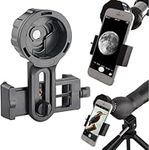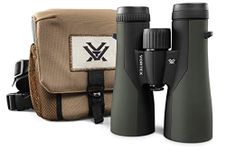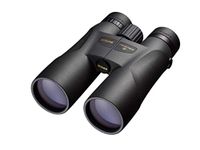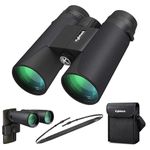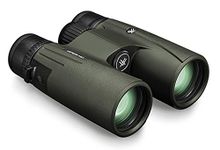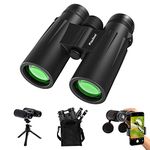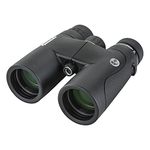10 bestLong Distance Binocularsof December 2025
112M consumers helped this year.
1
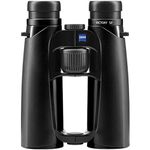
Victory SF 10x42 schwarz (2017)
ZEISS

9.9
2
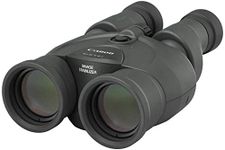
Canon 12x36 IS III Compact Lightweight Travel Binoculars - Powerful 12x long distance binoculars with Image Stabilizer, ideal for bird watching, travel and sports
Canon

9.8
18% off
3
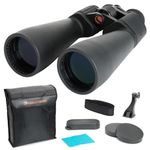
Celestron 71008 SkyMaster 25x70mm Porro Prism Binoculars with Multi-Coated Lens, BaK-4 Prism Glass and Carry Case, Black
Celestron

9.7
4
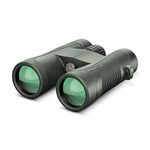
Hawke Endurance ED 10x42 Binocular - Green
Hawke

9.6
10% off
5
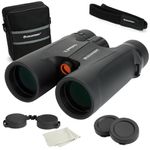
Celestron 71347 Outland X 10x42 Roof Prism Binoculars, Black
Celestron

9.4
OtherUp to 23% off
13% off
6
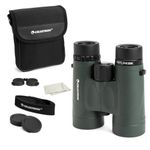
Celestron 71333 Nature DX 10x42mm Binoculars with Multi-Coated Lens, BaK-4 Prism Glass and Carry Case, Green
Celestron

9.2
7
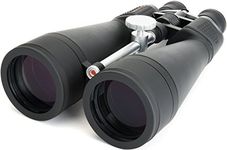
Celestron SkyMaster Binoculars 18-40x70 - Outdoor & Astronomy Binoculars - 18-40x Zoom Eyepiece - Large Aperture for Far View - Multi Coated Optics - Carry Case Included
Celestron

9.0
8
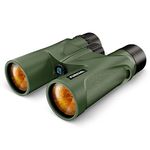
PURSUAL 10x42 HD Binoculars, High Power, Compact, Waterproof Binoculars for Adults & Kids with BAK-4 Prisms FMC Lens, For Bird Watching, Sports, Concerts, Travel, Fogproof, Shockproof & Dustproof
PURSUAL

8.7
9

Nikon Aculon A211 16x50 Zoom Binoculars - Black
Nikon

8.5
10
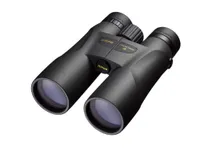
Nikon Prostaff 5 12x50 Binocular
Nikon

8.3
A Guide to Selecting the Best Long Distance Binoculars
When choosing long-distance binoculars, it's important to consider the specific features that will best suit your needs. Whether you're bird watching, stargazing, or attending a sports event, the right pair of binoculars can greatly enhance your experience. Understanding the key specifications will help you make an informed decision and ensure that you select a pair that provides the clarity, magnification, and comfort you require.
Magnification
Magnification refers to how much closer the binoculars can make an object appear. It's usually represented as a number followed by 'x', such as 10x. Higher magnification means you can see further, but it can also make the image shakier and reduce the field of view. For long-distance viewing, a magnification of 10x to 20x is often ideal. Consider what you'll be observing; for stationary objects like landscapes, higher magnification might be beneficial, while for moving objects like birds, a lower magnification might be easier to handle.
Objective Lens Diameter
The objective lens diameter is the size of the front lenses, measured in millimeters. This spec is crucial because it determines how much light the binoculars can gather, affecting image brightness and clarity. Larger diameters, such as 50mm or more, are better for low-light conditions and long-distance viewing. However, they also make the binoculars heavier. If you plan to use them in dim lighting or for stargazing, opt for a larger diameter. For daytime use, a smaller diameter might suffice and be more portable.
Field of View
Field of view indicates the width of the area you can see through the binoculars, usually measured in feet at 1,000 yards. A wider field of view allows you to see more of the scene at once, which is helpful for tracking moving objects. For long-distance binoculars, a field of view of around 300 feet at 1,000 yards is common. If you're observing fast-moving subjects or scanning large areas, prioritize a wider field of view. For detailed observation of distant objects, a narrower field might be acceptable.
Weight and Size
The weight and size of binoculars can affect how comfortable they are to use, especially for extended periods. Larger binoculars with bigger lenses tend to be heavier, which can be tiring to hold. Consider how you'll be using them; if you'll be stationary, weight might be less of an issue. However, if you're hiking or moving around, lighter, more compact models might be preferable. Balance the need for portability with the performance features you require.
Lens Coating
Lens coating refers to special treatments applied to the lenses to reduce glare and improve light transmission, resulting in clearer and brighter images. Coatings can range from single-layer to fully multi-coated lenses. For long-distance viewing, fully multi-coated lenses are ideal as they provide the best image quality. If you're using binoculars in bright conditions or for detailed observation, prioritize models with better lens coatings to enhance your viewing experience.
Waterproofing and Fogproofing
Waterproofing and fogproofing are important features if you plan to use your binoculars outdoors in various weather conditions. Waterproof binoculars are sealed to prevent moisture from entering, while fogproof models are filled with nitrogen or argon gas to prevent internal fogging. If you'll be using your binoculars in humid or wet environments, or if you want to ensure durability and longevity, look for models with these features. They provide peace of mind and ensure clear viewing in all conditions.
Best Reviews Guide Newsletter
Get exclusive articles, recommendations, shopping tips, and sales alerts
Sign up for our newsletter to receive weekly recommendations about seasonal and trendy products
Thank you for subscribing!
By submitting your email address you agree to our Terms and Conditions and Privacy Policy
